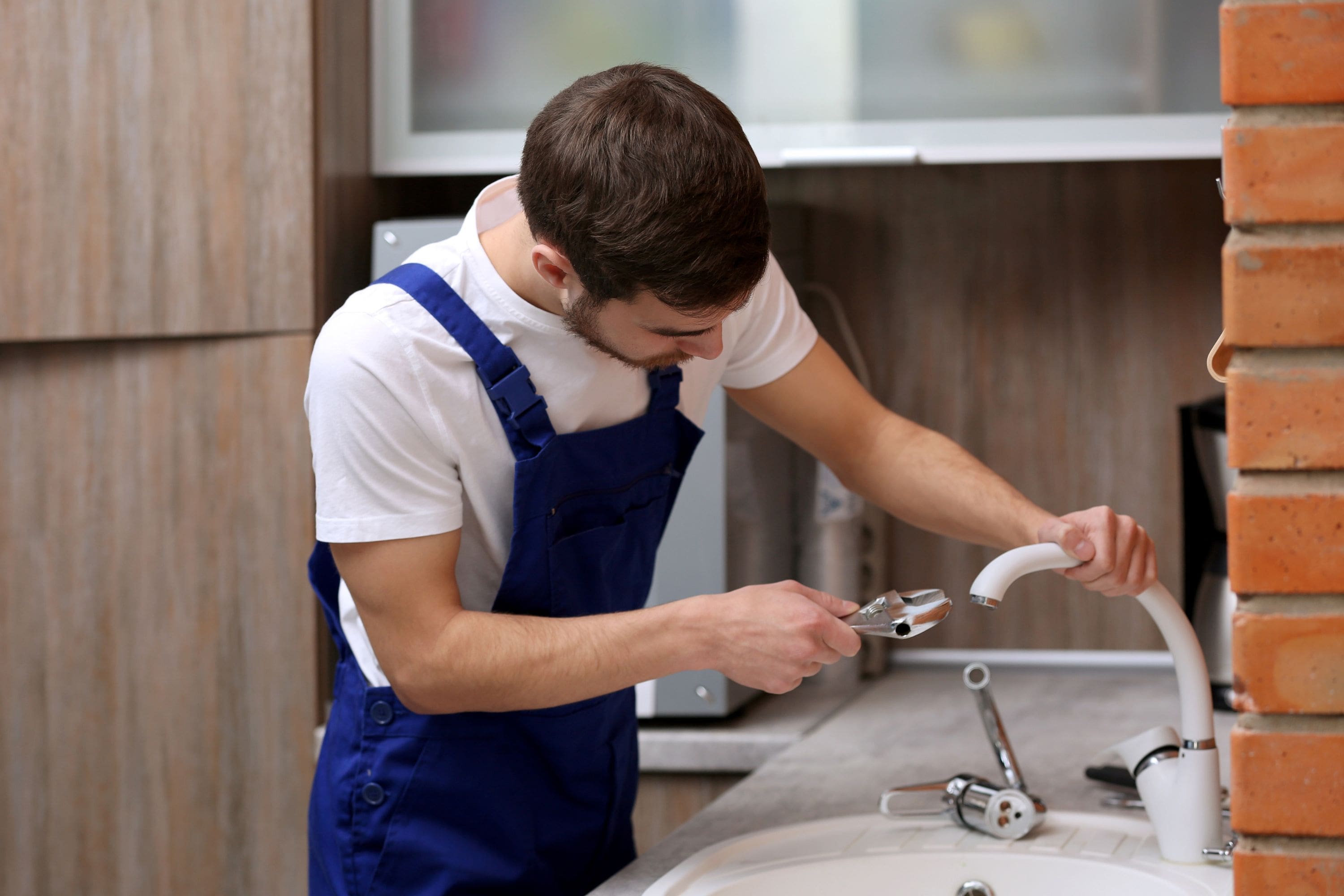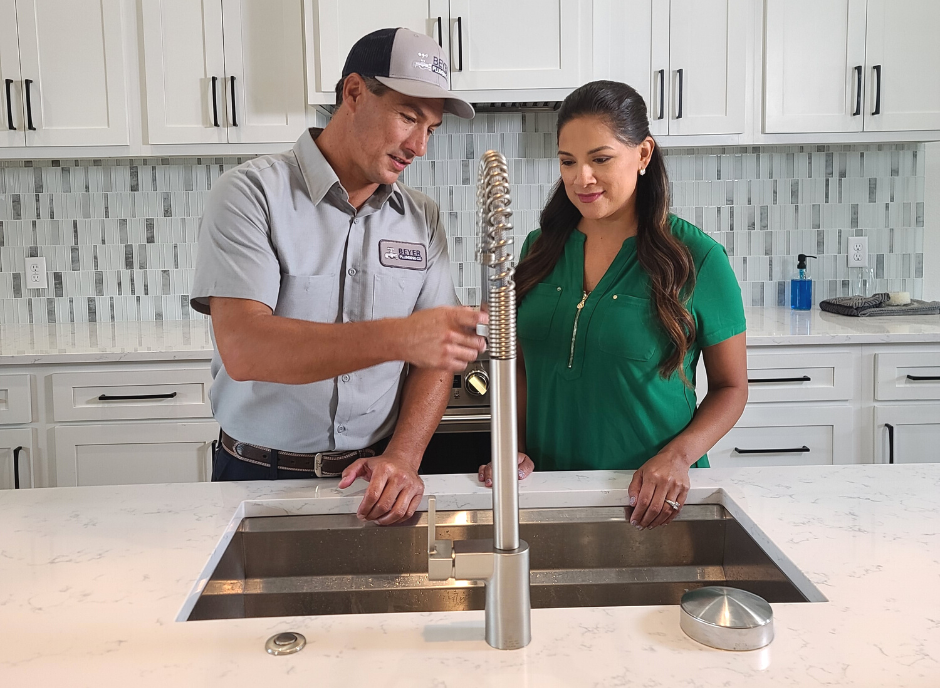Understanding the Significance of Dealing with a Leaking Faucet
Understanding the Significance of Dealing with a Leaking Faucet
Blog Article
They are making a number of great points related to 4 Common Reasons for a Leaky Faucet in general in this great article following next.

Dripping taps could seem like a small hassle, but their effect surpasses just the aggravation of the noise. From drainage to sustaining unneeded economic prices and health risks, neglecting a dripping faucet can bring about different effects. In this write-up, we'll look into why it's crucial to resolve this usual family issue promptly and effectively.
Wastefulness of Water
Ecological Effect
Dripping taps contribute considerably to water wastefulness. According to the Environmental Protection Agency (EPA), a single tap dripping at one drip per secondly can squander more than 3,000 gallons of water each year. This not only pressures water resources yet likewise influences environments and wildlife based on them.
Step-by-Step Overview to Repairing a Dripping Tap
Devices Needed
Before trying to fix a dripping faucet, gather the essential devices, consisting of a flexible wrench, screwdrivers, substitute components (such as washers or cartridges), and plumber's tape.
Common Faucet Issues and Their Solutions
Identify the type of tap and the specific concern triggering the drip. Typical problems consist of damaged washing machines, rusty shutoff seats, or faulty O-rings. Refer to producer directions or on the internet tutorials for detailed support on fixings.
Financial Expenses
Boosted Water Expenses
Beyond the environmental impact, dripping taps can blow up water expenses significantly. The built up wastefulness with time converts right into higher energy costs, which could have been stayed clear of with prompt repair services.
Potential Residential Property Damages
Furthermore, long term leaking can lead to harm to fixtures and surface areas surrounding the tap. Water accumulation can create staining, deterioration, and even structural problems if left neglected, resulting in additional repair work expenses.
Wellness Problems
Mold and Mold Development
The constant existence of wetness from a leaking tap produces a perfect setting for mold and mildew and mildew development. These fungi not only compromise indoor air quality but additionally position health and wellness risks, specifically for individuals with respiratory system problems or allergic reactions.
Waterborne Conditions
Stationary water in dripping taps can come to be a breeding place for germs and other virus, boosting the danger of waterborne diseases. Contaminants such as Legionella germs prosper in stagnant water, potentially resulting in severe ailments when ingested or breathed in.
Do it yourself vs. Specialist Fixing
Advantages and disadvantages of DIY Repair Work
While some may attempt to repair a leaking faucet themselves, do it yourself fixings feature their own collection of difficulties. Without proper knowledge and devices, DIY attempts can intensify the issue or result in incomplete repairs, lengthening the issue.
Benefits of Working With a Professional Plumber
Hiring a specialist plumber makes certain that the underlying root cause of the dripping faucet is addressed properly. Plumbing technicians possess the experience and devices to detect and repair tap issues effectively, conserving time and minimizing the danger of more damages.
Environmental Obligation
Specific Payment to Conservation
Taking responsibility for taking care of trickling taps straightens with broader efforts toward water preservation and ecological sustainability. Every person's activities collectively make a considerable effect on protecting valuable resources.
Sustainable Living Practices
By prioritizing prompt repairs and taking on water-saving behaviors, people add to sustainable living practices that profit both present and future generations.
Preventive Measures
Regular Upkeep Tips
To avoid dripping taps, carry out routine upkeep such as cleaning up aerators, evaluating for leaks, and replacing damaged parts promptly. Additionally, consider installing water-saving gadgets or upgrading to a lot more efficient components.
Importance of Prompt Fixes
Dealing with trickling faucets as soon as they're seen avoids additional water wastefulness and potential damage, eventually conserving both water and cash in the future.
Impact on Building Value
Understanding of Well-Maintained Residential Or Commercial Property
Maintaining a residential property in good condition, consisting of addressing upkeep concerns like trickling faucets, enhances its perceived worth and desirability among possible buyers or renters.
Impact on Resale Worth
Characteristics with well-kept plumbing components, consisting of taps, command greater resale values in the property market. Attending to dripping faucets can contribute to a favorable impression during home examinations and negotiations.
Final thought
Dealing with a trickling faucet surpasses mere ease; it's an essential action toward conserving water, decreasing monetary expenses, and protecting health and residential property. Whether with DIY repair services or professional help, acting to fix leaking faucets is a small yet impactful method to advertise accountable stewardship of sources and add to a healthier, extra sustainable future.
Most Common Reasons for a Leaky Faucet and How to Stop the Drip
Whether it’s your kitchen faucet leaking or a bathroom faucet leaking, one leaky faucet can waste anywhere from three to 30 gallons of water every single day. If the constant drip-drip-drip doesn’t get your attention, your water bill will. The good news is that, by following a few simple steps, chances are pretty good you can fix the problem yourself.
Why is it dripping?
Before you start taking things apart, let’s break down some of the most common causes of a leaky faucet.
Bad O-ring.
A cartridge is a valve that controls the flow of water into the faucet spout. On cartridge faucets there’s an O-ring—the little disc attached to the stem screw that holds the faucet handle in place. If it’s loose or worn-out, it can cause your sink handle to leak. Of course, the cartridge itself could be worn out. If that’s the case, make sure you replace it with the exact same kind.
Corroded valve seat.
The valve seat connects the faucet and the spout. If the leak seems to be coming from the spout, it might be because a buildup of water sediment has corroded the valve seat.
Worn-out washers or seals.
A leaky spout could be caused by a bad washer that rests against the valve seat. It’s just a matter of time before friction takes its toll. It could also be the wrong size washer or one that’s been installed incorrectly. Water sediments can also corrode inlet and outlet seals.
Water pressure.
If the faucet only drips now and then, or when you turn the handles a certain way, you should probably check your home’s water pressure.
Loose or broken parts.
The adjusting ring and packing nuts in the stream screw can become loose over time, causing your sink handle to leak. Try tightening or replacing the packing nut. If the leak is coming from the pipes underneath the sink, you probably have a broken pipe or fitting. If that’s the case, you should definitely call a plumber.
Know your faucet.
Faucets come in a variety of types. Each one has its own assembly—and its own possible causes of leaks. Learning about the four most common kinds of faucets will help you know how to take them apart and make any repairs.
How to stop a leaky faucet
Fixing that leaky faucet doesn’t have to take a lot of time, money, or expertise. It’s usually a simple matter of replacing a worn-out washer or gasket, a loose O ring, or another part. Chances are really good you can do this yourself if you follow these simple steps.
Shut off the water.
Before you tackle the faucet, cut off the water supply to the sink. There should be one valve for hot and one for cold. Hand-turn them clockwise with your hands till they close. If there are no valves under the sink, head to the basement and shut off the main water supply to the house. Then turn on the faucet until it empties out the water that’s still in the line and you’re ready to start. It’s a good idea to cover the sink drain with a plug or a rag so you don’t lose any small pieces and parts while you’re working.

We had been made aware of that write-up on How to Fix a Dripping or Leaky Faucet through a friend on a different site. If you please set aside a second to promote this entry if you appreciated it. I appreciate reading our article about Should I Repair or Replace a Leaky Faucet?.
Report this page